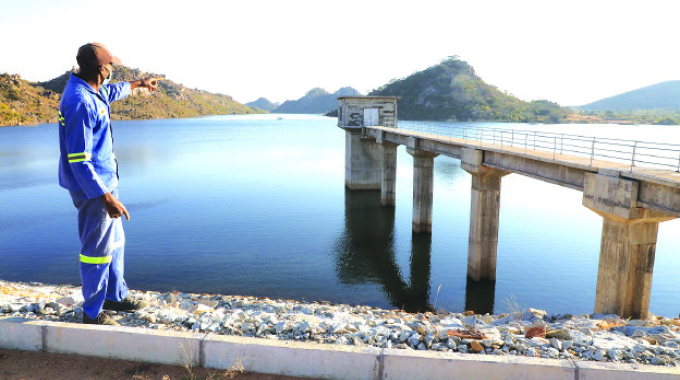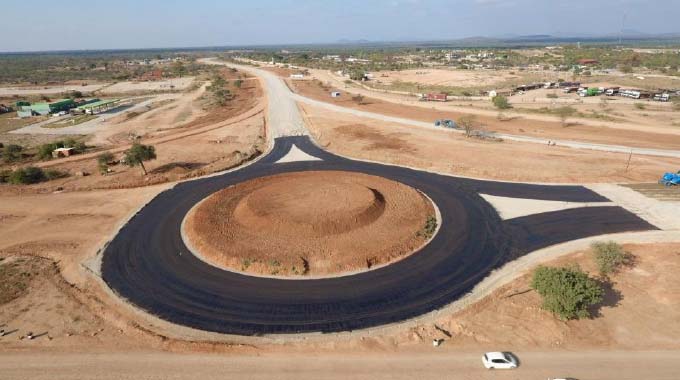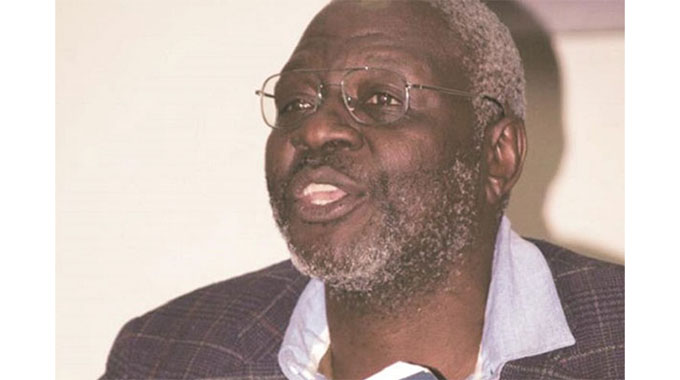Rural development acceleration anchored on agriculture

Correspondent
Zimbabwe’s Vision 2030 is that of an ‘empowered upper middle-income society by 2030’ and the Ministry of Lands, Agriculture, Fisheries, Water and Rural Development is mandated with ensuring that this vision is realised.
The Ministry launched the Rural Development 8.0 model aimed at eradicating poverty in all its forms, including food and water poverty through an “agricultural development-rural industrialisation-rural Development-Vision 2030 nexus.
This is anchored on the indisputably correct observations that “development originating from the agricultural sector is twice as powerful at lifting people out of poverty than development emanating from other sectors”, and that “no country has transitioned from a low income economy to a middle or upper middle income economy without increasing agricultural productivity”.
Agricultural Development will cause rural industrialisation.
We also know rural industrialisation will cause rural development. And we know that rural development will accelerate and facilitate the attainment of Vision 2030.
Therefore, the collective impact of our agricultural interventions dubbed Rural Development 8.0 are outcome-based interventions impacting the attainment of Vision 2030.
These interventions are:
• Presidential Rural Development Programme;
• Presidential Climate-Proofed Input Scheme;
• Presidential Cotton Scheme;
• Presidential Blitz Tick Grease Scheme;
• Presidential Community Fisheries Scheme;
• Presidential Poultry Scheme;
• Presidential Goat Scheme and;
• Local Inventions and Innovations.
Water is at the centre of all these programmes and the Government will deliver reliable water supply to 35 000 rural communities and 9 600 schools by 2025 and this will provide the necessary water resource for development.
Of the 47.3 billion cubic meters’ water storage capacity, Zimbabwe has developed a mere 10.589 cubic meters (22.4 percent) in dams as response to the climate change vagaries
We have, therefore, embarked on an ambitious water harnessing programme and our focus is to complete all stalled dam projects.
We will deliver hydro-electricity, fisheries, potable water supply, climate smart agriculture/irrigation and eco-tourism projects at these sites.
Whilst we are aware that the we are endowed with water resources that have a potential to irrigate over 2 million hectares, we will equip with irrigation infrastructure at least 350 000ha to assure the nation of food self-sufficiency and become a net exporter of grains.
Government has developed the National Accelerated Irrigation Rehabilitation and Development Programme anchored by the Agricultural and Food Systems Transformation Strategy which seeks to strengthen resilience of agricultural livelihoods of vulnerable communities particularly women and children, and also graduate the irrigation farmers from pro subsistence to farming as a business, contributing to national and regional food security situation.
The V30 Accelerator Model, a business model for rural irrigation transformation will be accelerated at space and pace.
To this end, there is the Directorate of Water Resources, Irrigation Development and National WASH Coordination whose brief and mandate is to develop, utilize and manage water resources and ensure that our agricultural sector is climate proofed through irrigation development and management and ensure the population is water safe and secure coordinates.
Presidential Rural Development Programme
The Presidential Rural Development Programme anchored on borehole drilling was officially launched late 2021 in Matabeleland South, Mangwe District.
The programme targets to drill 35 000 boreholes during the National Development Strategy Phase 1 (NDS1 2021-2025).
In addition, 9 600 boreholes will be drilled by DDF in selected schools under the same programme.
A total number of 571 boreholes has been drilled under the programme as of 20 February 2023.
Masvingo Province is leading in the drilling progress with 109 boreholes followed by Mashonaland West and Mashonaland Central with 93 and 84 boreholes respectively.
The target for this year is 5,184 boreholes and resources amounting to US$28,203,078.40 is required.
Under the 2023 PSIP budget, the Treasury has allocated ZWL$5.3 billion towards the drilling of boreholes in the rural communities, including schools.
To ensure the target of 35 000 boreholes under the NDS1 period is achieved, the drilling capacity of the key institutions, ZINWA and DDF, need to be enhanced through purchase of additional rigs.
Currently ZINWA has 16 rigs under the programme and requires 64 additional rigs in order to make significant progress. The estimated cost of purchasing the additional rigs is US$16 million.
The tendering process for the purchase has started.
Status of Dam Projects
The Ministry is implementing 13 dam projects expected to be completed in both phases of the NDS1 and 2. Most of the dams are on -going while Defe Dam is a new project starting this year.
In the last two years, the Government has completed and commissioned Marovanyati and Muchekeranwa dams in Manicaland and Mashonaland East Province respectively, while Chivhu Dam has been substantially completed.
This year, the target is to complete the Lake Gwayi Shangani which is now at 70.2 percent completion level.
Irrigation Development and Management
Zimbabwe is endowed with water resources that have a potential to irrigate over two million hectares.
The country has about 220 000ha equipped with irrigation infrastructure out of which only about 193 000ha of the equipped infrastructure is functional.
The country needs at least 350 000ha of functional irrigated land as the minimum capacity that will assure that the nation becomes food self-sufficient and a net exporter of grains. This projection takes into cognizance the fact that there is growing competition of irrigated produce and emerging crops are competing for space with strategic crops such as maize, wheat and soyabeans,
Full article on. www.herald.co.zw
Around 100 000ha is already committed to full time crops such as sugarcane, citrus, tea and other crops grown by commercial estates,
The National Accelerated Irrigation Rehabilitation and Development Programme (NAIRDP) is closely aligned to the Agricultural Recovery and Growth Plan & Agricultural and food systems transformation strategy.
Its thrust seeks to boost national agricultural productivity and at the same time counter the effects of climate change, necessitating climate proofing of the agriculture sector.
Government set aside ZWL29 billion for irrigation rehabilitation and development of 12 800ha in the year 2023.
Apart from direct government funding, the National Accelerated Irrigation Rehabilitation and Development Programme is being complemented by development partner and private sector supported programmes.
Ongoing irrigation development programmes are outlined below.
Ongoing PSIP Irrigation Projects
A total of 30 projects covering 1 800ha are ongoing. Works have been stalled by the revaluation of the contracts.
Projects include Kanyemba, Nyanyadzi and Mwenje. Most of the contracts date back to 2018 and need revaluation to reflect prevailing market prices.
MAKA 20000
This is a programme expected to develop or rehabilitate 20000ha of irrigation for small holder farmers.
(a) Maka Turnkey Phase 1
Funded through PSIP, Turnkey Phase 1 is expected to develop/rehabilitate 1437ha on 21 irrigation projects. Extension on other projects using the infrastructure will add the area to 2246 ha.
To date, a total of 16 projects covering 1005ha were completed and works are ongoing on 5 outstanding projects
(b) Maka Turnkey Phase 2
Turnkey Phase 2 is targeting to put 5 778ha under irrigation on a total of 32 projects. To date, 5 projects covering 319ha were completed and works are in progress on other projects.
The Smallholder Irrigation Revitalisation Project (SIRP)
Co-funded by the International Fund for Agricultural Development (IFAD), OFID and Government (US$50 million) targeting 6 100 ha over 7 years up to 2023 in Manicaland, Masvingo, Matabeleland South and Midlands provinces.
To date the cumulative functional area under the project amounts to 2734.8ha.
Zhove Irrigation Project
Co-funded by Kuwait Fund for Arab Economic Development, Abu Dhabi and Government of Zimbabwe (USD35 million) targeting 2 500 ha in Beitbridge District. The project is still under feasibility studies stage.
Commercial Irrigation Facility
The Government of Zimbabwe has a running agreement with CBZ Agroyield and Maka Farm to partner DOI in the development of irrigation in Zimbabwe. The programme targets to develop 80 000ha for A2 farmers.
Centre Pivots Irrigation Facility
The Government of Zimbabwe has running agreements with AFC and Pedstock Investments on the supply and installation of centre pivots targeting 2 900ha. A total of 2 020ha is now functional out of the targeted 2 900ha.
Building Climate Resilience of Vulnerable Agricultural Livelihoods in Southern Zimbabwe
– The project targets to put 1 786ha on 21 projects under climate-proofed irrigation with co-financing from the Green Climate Fund (GCF), the United Nations Development Programme (UNDP) and the Government of Zimbabwe (USD26 million).
– The project will run until 2027 in Manicaland, Masvingo and Matabeleland South provinces.
– To date feasibility studies and detailed designs were completed on 10 projects and construction works are expected to commence in the first quarter of 2023 as procurement of contractors is currently underway.
Smallholder Agriculture Cluster Programme (SACP)
Co-funded by the International Fund for Agricultural Development (IFAD) and the Government targeting 1400 ha in five provinces: Mashonaland Central, Mashonaland East, Mashonaland West, Midlands and Matabeleland North.
The project is still in the inception phase.
i. Special Drawing Rights (SDR) Projects –
Funded by the International Monetary Fund (IMF) (US$20 million), the programme is targeting 3 634ha on 19 projects,
The programme is still in the inception phase.
ix. Private Sector Contribution
The Ministry is crowding in the participation of the private sector in irrigation development under the auspices of the Irrigation Development Alliance.
In the year 2022, the private sector weighed in with a total 18 000ha under functional irrigation facilities.










Comments